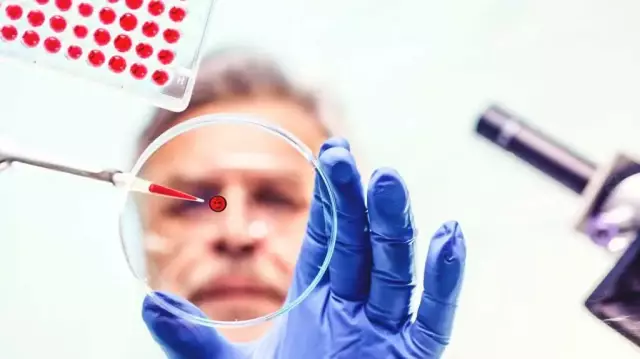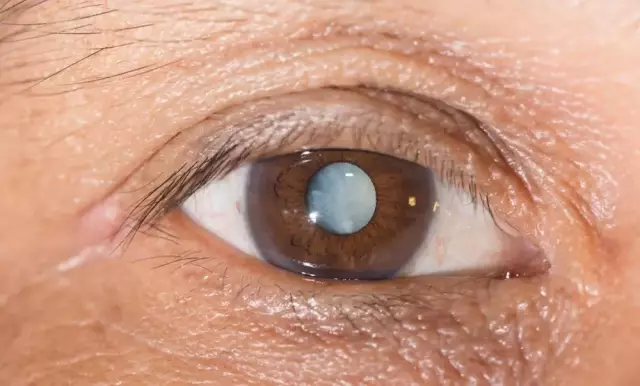- Author Rachel Wainwright [email protected].
- Public 2023-12-15 07:39.
- Last modified 2025-11-02 20:14.
Bartholinitis
The inflammatory processes that occur when the ducts of the Bartholin gland are blocked are called bartholinitis. The reasons that contribute to the manifestation of the symptoms of bartholinitis are various infectious pathogens that enter the Bartholin duct, both by direct (sexual) and other (bypass) routes, for example, from an infectious focus in the tonsils or in a diseased tooth.
It is worth noting that such causes of bartholinitis in general statistics are much less common. The most common first variant of the onset of bartholinitis is the infection through the external genitals into the tissue of the Bartholin gland, the ducts of which are displayed on the inner surface of the labia minora.
Bartholinitis reasons

The most common causes of bartholinitis, experts attribute the lack of attention of women to adherence to the rules of personal hygiene, as well as a weakened immune response to infection with pathogens.
Bartholinitis occurs when a variety of pathogenic pathogens invade the body - chlamydia, streptococci, staphylococci, E. coli, Trichomonas, gonococci and viruses. Often, the activation of the disease occurs due to the effect on the female body of a combination of several types of harmful microorganisms.
Microbes and viruses easily overcome the thin tissue walls of the Bartholin gland through its excretory duct, which is open on the eve of the vagina (the outlet of the duct is located between the back and middle third of the inner surface of the labia minora). That is why, the most likely way for bartholinitis to occur is infection from the woman's urethra or vagina. As mentioned above, the causes of bartholinitis caused by the ingress of a pathogenic infection through the circulatory system are theoretically also possible, but in practice they are quite rare.
In the overwhelming majority of cases, the development process of bartholinitis occurs unilaterally, i.e. only one gland becomes inflamed. In the course of the progression of the disease, the excretory duct of the Bartholin gland is blocked and the purulent secretion, which rapidly accumulates inside the gland, does not have a natural outlet.
Subsequently, an inflammatory and extremely painful abscess (rapidly increasing and sometimes reaching the size of a chicken egg) forms in the gland, a high body temperature rises, the patient periodically shivers and fever. In the area of the inflamed gland, there is a tingling sensation, burning and pain radiating to the perineum. Sometimes an abscess spontaneously opens and a foul-smelling greenish-yellow fluid flows out of it. The symptoms of bartholinitis subside for a while, and the disease recedes, but after a while it recurs with renewed vigor, so you should not delay a visit to the doctor, especially if bartholinitis occurs during pregnancy.
Diagnostics of the bartholinitis
With self-diagnosis, a woman can easily detect the following symptoms of bartholinitis:
- on the border of the lower and middle third of the labia majora, induration and swelling are felt;
- the skin over the site of inflammation is red (with a bluish tinge), hot and very painful to touch;
- high body temperature (38 degrees and above);
- general weakness, lethargy;
- signs of intoxication of the body;
- when pressing on the inflamed gland, a sharp, burning and unbearable pain occurs.
In the absence of the necessary treatment for bartholinitis, a purulent abscess can open spontaneously and its contents are released outward, temporarily bringing relief and relieving tension from inflamed tissues. After opening the abscess, the temperature immediately decreases, the painful sensations go away and a woman suffering from bartholinitis may get the impression that the disease has finally receded. But in fact this is not true - bartholinitis goes into a chronic stage. After a short relief, without proper treatment, bartholinitis returns and will recur constantly. Chronic bartholinitis requires a long time and more serious efforts for its treatment, both from the patient and from the doctor.
With a prolonged untreated existence of chronic bartholinitis, a sick woman has a risk of forming a cyst of the bartholin gland.
If you yourself have discovered the symptoms of bartholinitis described above, you need a timely visit to a gynecologist to establish an accurate diagnosis and timely treatment.
To diagnose bartholinitis, a gynecologist will conduct a standard examination of the woman's internal and external genitalia. Discharge from the Bartholin gland duct will be sent for microbiological laboratory testing to accurately identify the causative agents of the disease. When a purulent abscess is opened, its contents will also be sent for culture. The results of laboratory tests will make it possible to exclude the presence of severe infections and to prescribe the correct drug treatment for a woman with bartholinitis.
Bartholinitis symptoms
The symptoms of bartholinitis vary depending on the nature of its course. Acute bartholinitis proceeds, as a rule, with the formation of a false abscess, with acute pain and a sharp deterioration in health. Soreness in the area of the abscess reaches such a degree that the patient cannot move independently. Symptoms of bartholinitis persist until the abscess breaks out on its own or is opened in a medical facility. With a spontaneous opening, the purulent contents of the abscess do not completely expire, the symptoms of bartholinitis subside and the disease passes into a chronic stage.
Symptoms of chronic bartholinitis usually appear during menstruation, after hypothermia, during the period of seasonal infectious diseases and against the background of a general decrease in immunity. In chronic bartholinitis, the soreness is not as intense as in its acute course, the body temperature rarely rises to high levels, the woman's performance often does not decrease.
Bartholinitis during pregnancy requires special attention. A pyogenic infection that caused the onset of the disease can overcome the placental barrier and enter the circulatory system of an unborn child. Extremely dangerous consequences are possible in the first trimester of pregnancy, when all future systems and organs of the baby are laid and formed.
Bartholinitis treatment

Treatment of bartholinitis should be carried out in a hospital under the constant supervision of specialists. After opening a purulent abscess and draining it, the gynecologist, as a rule, prescribes appropriate treatment with antibiotics and sulfa drugs. If necessary, the issue of complete removal of the Bartholin gland is resolved and its exfoliation is carried out.
After discharge from the hospital, in order to prevent and prevent the onset of symptoms of bartholinitis on the other hand, a woman must strictly follow the rules of personal hygiene. As an independent measure, you can advise the periodic adoption of sitz baths with a diluted (slightly pink) solution of potassium permanganate or a decoction of chamomile. The time for taking such a bath is about twenty minutes.
YouTube video related to the article:
The information is generalized and provided for informational purposes only. At the first sign of illness, see your doctor. Self-medication is hazardous to health!






